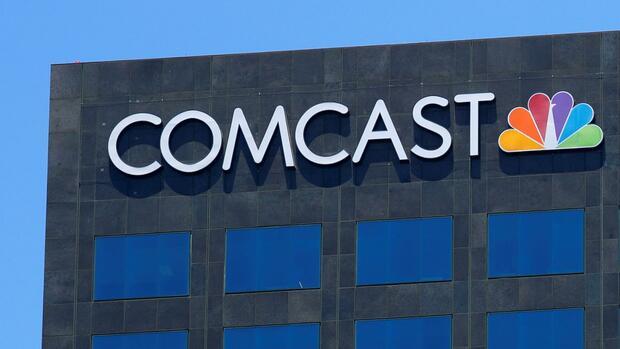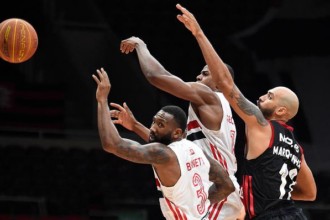Comcast is bracing for a pivotal period as it contends with $10 billion in losses from its Peacock streaming service, aiming to offset the financial strain with a highly anticipated NBA partnership. The media giant’s latest financial disclosures reveal significant challenges in the competitive streaming landscape, underscoring the importance of premium sports content in driving subscriber growth and revenue. As Comcast awaits the potential boost from exclusive NBA broadcasting rights, industry observers are closely watching whether this strategic move can reverse Peacock’s costly trajectory.
Comcast Faces Growing Pressure Amid Rising Peacock Streaming Losses
Comcast’s streaming service Peacock has been under significant financial strain, with reported losses reaching an eye-watering $10 billion since its inception. Despite its extensive content library and aggressive marketing efforts, the platform has struggled to convert its user base into a profitable subscriber model. Analysts point to aggressive competition from industry giants like Netflix and Disney+, as well as the challenges of monetizing ad-supported tiers, as key factors that have compounded Peacock’s financial woes. Comcast is now banking on expanding its sports portfolio, particularly the upcoming NBA season, as a critical lever to boost subscriber engagement and reverse the tide.
Peacock’s foray into live sports streaming is seen as a strategic pivot designed to leverage the growing demand for exclusive sports content. The company’s upcoming NBA deal is expected to:
- Attract a broader demographic of sports fans who prefer streaming over traditional cable
- Increase average revenue per user (ARPU) by upselling premium sports packages
- Provide valuable advertising inventory during high-profile live events
However, overcoming entrenched consumer habits and stiff competition will require significant investment in both content acquisition and technology infrastructure. Comcast’s ability to successfully monetize its extensive content, including this new NBA partnership, will likely determine Peacock’s long-term viability in the crowded streaming marketplace.
| Metric | Value |
|---|---|
| Total Peacock Losses | $10 Billion |
| Annual Streaming Revenue Growth | 15% |
| Expected NBA Impact on Subscriptions | Up to 25% |
| Advertising Revenue Potential | $500 Million+ |
NBA Partnership Seen as Crucial Catalyst for Comcast’s Media Strategy
Comcast’s strategic tie-up with the NBA emerges as a pivotal move to counterbalance the staggering $10 billion losses reported by its streaming service, Peacock. Industry analysts highlight that this partnership is not merely a content acquisition but a calculated effort to leverage live sports, one of the last strongholds of linear viewing, to drive user engagement and subscription growth. With the NBA’s massive global fanbase, Comcast aims to integrate exclusive game broadcasts and original programming, amplifying Peacock’s appeal in a fiercely competitive OTT landscape.
The collaboration is expected to unlock several key benefits:
- Expanded subscriber base: Targeting diverse demographics through basketball’s broad appeal.
- Enhanced advertising revenue: Capitalizing on premium ad slots during live events.
- Cross-platform synergy: Utilizing Comcast’s cable network alongside Peacock to maximize reach.
| Key Metric | Pre-NBA Partnership | Projected Post-Partnership Impact |
|---|---|---|
| Peacock Subscribers (millions) | 20 | 35+ |
| Average Viewing Hours per User | 12 hrs/month | 20 hrs/month |
| Advertising Revenue Growth | 5% | 15%+ |
Strategic Recommendations for Comcast to Leverage Sports Content and Mitigate Financial Risks
To capitalize on its longstanding investment in sports broadcasting, Comcast should aggressively integrate NBA content across Peacock and its broader ecosystem. Prioritizing exclusive live games, behind-the-scenes footage, and interactive features can attract a loyal subscriber base, driving higher retention and reducing churn. Enhancing cross-platform exposure, especially by bundling NBA-related content with other Comcast services, can deepen audience engagement and unlock diversified revenue streams. Collaborations with advertisers that leverage live sports’ real-time viewership will be vital in monetizing this premium content effectively.
Simultaneously, Comcast must implement robust financial risk mitigation strategies to stem the losses reported on Peacock. Optimizing operational costs through advanced data analytics for targeted marketing and content delivery can enhance profitability without sacrificing user experience. Exploring tiered subscription models and strategic partnerships with sports leagues can offload content acquisition risks. The following table outlines key initiatives and projected impacts:
| Initiative | Description | Projected Benefit |
|---|---|---|
| Exclusive NBA Content Packages | Curated live games with interactive features | Increase subscriber loyalty by 15% |
| Tiered Subscription Models | Flexible pricing based on content access | Drive incremental revenue growth |
| Strategic League Partnerships | Shared costs and co-marketing efforts | Reduce content acquisition expenses |
| Advanced Data Analytics | Targeted advertising and content recommendations | Improve ad revenue and user engagement |
Wrapping Up
As Comcast navigates the significant financial pressures from Peacock’s mounting losses, the company is pinning hopes on a potential uplift from its NBA partnership. The outcome of this strategic gamble remains to be seen, but it underscores the broader challenges and high stakes facing media conglomerates as they adapt to a shifting sports broadcast landscape. Industry watchers will be closely monitoring how these developments influence Comcast’s future streaming strategies and overall financial health.














